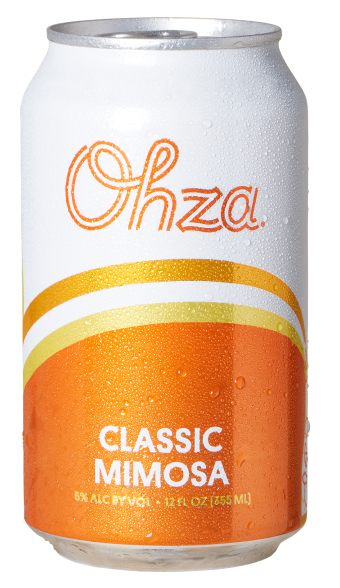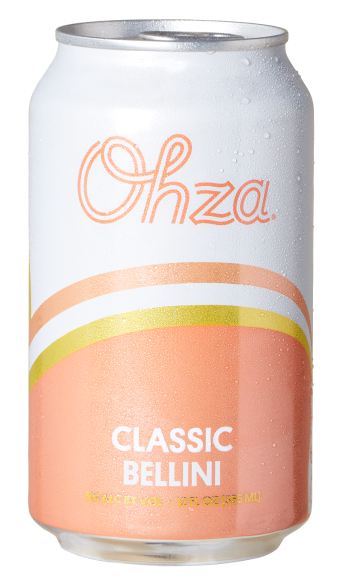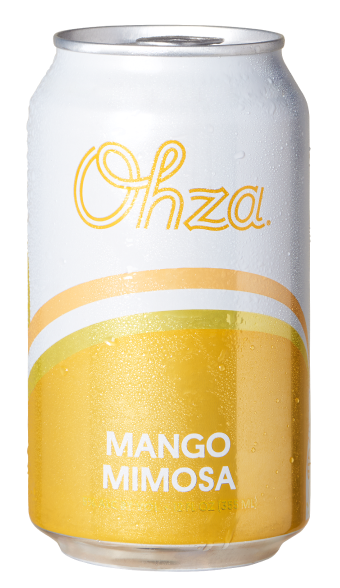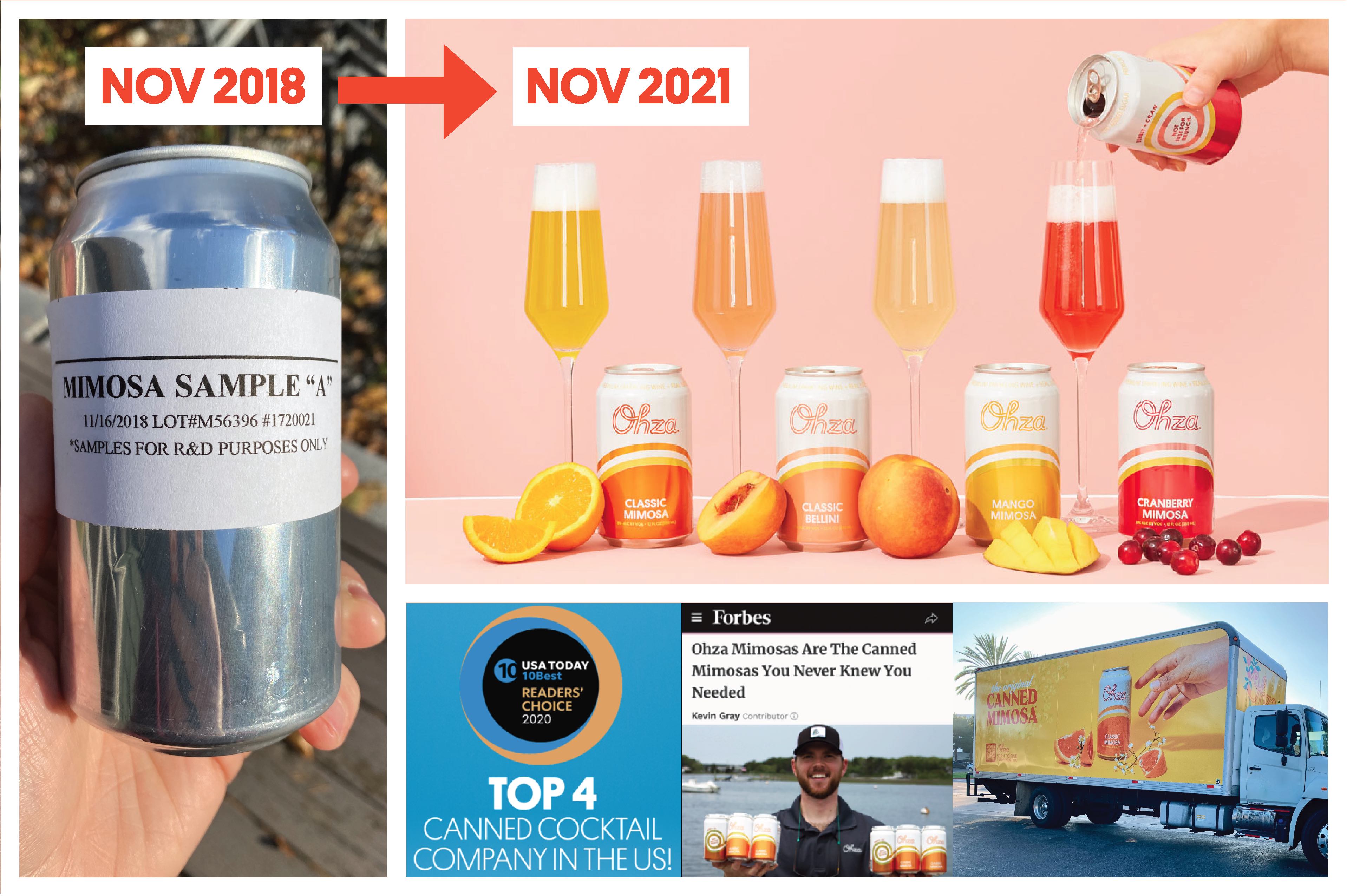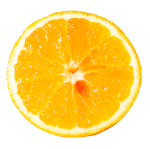What Is Prosecco and How Does It Differ From Other Sparkling Wines

It's safe to say that we’ve all heard of Champagne. It is one of the most easily recognizable types of sparkling wine—but it’s also one of the most recognizable beverages in the world. We all know that it’s bubbly, French, and just a little bit fancy. It’s an iconic staple in the beverage world.
But what do you know about Champagne's sparkling cousin, prosecco? What does it taste like? Where does the name come from, and what is prosecco used for?
We are here to answer all your questions and give you everything you wanted to know about prosecco.
The History of Prosecco
To understand what prosecco is all about, we have to dive into the history of the drink. Prosecco is considered one of the absolute best wines around, even becoming more popular than Champagne. But this sparkling wine has a humble beginning.
The Glera Grape
The Glera grape, which is used to create prosecco, has actually been used for hundreds of years. It was around even before the name prosecco even came into existence.
The Glera grapes can be traced back to the Roman era. It’s like you’re drinking a bit of history. However, it is likely that the Glera grapes used to make the wines from the Roman era were not sparkling wines like we know them today.
The Origins of Prosecco
Some theorize that prosecco has been around for several centuries despite the first official mention being made by Aureliano Avanti in 1754. The legend goes that the community of the previously poor region of Conegliano made white wine “pour from the hills” as though the drink came from Neptune’s fountain to honor the passing through of Poland’s King Henry III on his way to assume his position as King of France.
The theory is that what that community created for the King was indeed the first taste of prosecco, or at least the model that modern-day prosecco follows.
A little less than 20 years later, Francesco Maria Malvolti established the link between prosecco and the region of Conegliano. Eventually, winemakers there decided that wine could only be called prosecco if it was made in that specific region.
Conegliano’s School of Winemaking was then founded in 1878. The Conegliano’s School of Winemaking was groundbreaking for the entire wine industry. Prosecco was the leading wine into a new wave of educational breakthroughs for new winemakers and the industry as a whole.
Prosecco vs. Champagne
Though these two sparkling wines are similar, they do have key differences. The easiest way to differentiate the two is by region. Champagne is made in France, while prosecco is made in Italy, each in its own specific region.
One other big difference between prosecco and Champagne is the type of grapes used to make the wines. As mentioned previously, prosecco uses the Glera grape. Champagne uses grapes like Chardonnay, Pinot Noir, and Pinot Meunier, or some combination of the three.
The Methods of Production
Another way to tell the difference between these two is how the wines themselves are made. It all comes down to the bubbles. No matter the method you choose, to make sparkling wine, you must add CO2 into the bottle of wine.
Champagne is made through a process simply referred to as the traditional method, and it’s the most well-known and most expensive method of making wine.
With the traditional method of winemaking, the second fermentation happens inside the bottle. This method adds texture and complexity to the bottle of wine, and it actually can change the wine itself, especially as it ages.
Prosecco does things a little differently.
Prosecco is made with a cheaper, faster, and less labor-intensive method called the Tank Method. By utilizing the Tank Method, the winemaker can retain Glera’s perfume and freshness.
Much like the name implies, this method takes place in a tank, where yeast and sugar are added to wine to trigger a second fermentation. The rapid fermentation is then stopped by cooling the wine when the desired atmosphere of pressure has been reached.
This method has also been called The Italian Method, Charmat-Martinotti, and autoclave in the Italian language.
Prosecco’s Price Point
One big question many people have is why Champagne is so much more expensive than its counterpart, prosecco. Easy answer: the process!
As mentioned previously, the processes between Champagne and prosecco are very different, and they take very different amounts of time. Thus, the two wines have very different price points, which prosecco sitting much lower on the scale.
Save Champagne for special events like weddings and other celebrations and choose prosecco for everyday use.
Is Prosecco Sweet?
When it comes to prosecco, the flavor can honestly range from super sweet to not very sweet at all. A wine’s sweetness is denoted by how “dry” it is. This term relates directly to prosecco too.
If you’re not sure what you’re looking for and you just grab a bottle of prosecco off the shelf, you may be surprised by how sweet it is. Oftentimes the bottle will be labeled with one of the following names. Here is our quick guide to determining how sweet your wine will be.
Extra Brut – Extra Brut is the driest that a prosecco can be.
Brut – Brut is still fairly dry but will be slightly sweeter than a bottle labeled Extra Brut.
Extra Dry – Extra Dry is sweeter than Brut or Extra Brut. The name may be a little misleading, but this is one of the most well-rounded sweetnesses found in sparkling wine. Prosecco is no exception to that rule.
Dry – Here’s where it gets a little confusing. Up until now, we’ve been using “dry” to mean a wine that isn’t sweet. But when it comes specifically to sparkling wines, the word “dry” actually means a wine that’s slightly on the sweeter side.
So, is prosecco sweet? That fully depends on what kind you choose.
DOC vs. DOCG
When determining if a wine is truly “Italian” or not, it all comes down to the region. Thankfully, there is a standard system to help us identify where prosecco and other Italian sparkling wines really come from.
- DOCG, aka Denominazione di Origine Controllata e Garantita (Denomination of Controlled and Guaranteed Origin, DOCG).
-
DOC, aka Denominazione di Origine Controllata (Denomination of Controlled Origin).
This system of designation for Italian wines was created in the early 1960s, and it’s pretty similar to the French AOC/AC system.
These vineyards stretch across two regions in Italy for a total area of 890 square kilometers, so a whole lot of wine can be made there.
The DOCG region is renowned for its superior grape quality because it’s long been associated with Prosecco Conegliano Valdobbiadene Superiore (the original area prosecco was established in). Wine produced under DOCG regulations in Italy is under the most control, and it’s considered more prestigious than other kinds of wine.
The DOC area is bigger, and vine growth isn’t restricted to hillsides, although it is possible to find almost anywhere in the growing zone.
Most bottles will tell you right on which region (either DOC or DOCG) your wine is from and if it truly is an Italian wine.
What Is the Best Kind of Prosecco?
The majority of quality prosecco wines made in the Veneto and Friuli are DOC classification. The classification depends on the way the grapes are grown, where they are grown, the process of producing, and so on.
DOCG prosecco wines are from a smaller region in Veneto between the towns of Valdobbiadene and Conegliano. DOCG prosecco typically has higher quality standards.
Of course, as with any food or drink, it really does come down to personal preference. You might find that you love a DOC prosecco and that you aren’t particularly impressed by a DOCG bottle. The only way to know is to try them out.
What Flavor Notes Can You Expect of Prosecco?
Since prosecco is made differently than Champagne, it has its own unique flavor elements. Prosecco definitely errs on the sweeter side, with softer bubbles that make it a great option for pairing with food. When you sip a bottle of this bubbly, here’s what you'll taste.
- Aromatic: Prosecco often has sweet fruit aromas of peach, pear, melon, green apple, and honeysuckle. These aromas and flavors are preserved by the second fermentation process in the Tank Method.
- Sweet: Prosecco definitely leans on the sweeter side of wines. Even brut options have an element of sweetness.
- Softly sparkling: Prosecco has two levels of fizz: spumante (sparkling) and frizzante (semi-sparkling). Both of these are less carbonated than Champagne, whose higher pressure comes from the traditional method of the carbonation process.
How to Enjoy Prosecco
Champagne is often served in a Champagne flute, but prosecco is best enjoyed cold in a tulip style sparkling wine glass. The tulip glass is ideal because it’s tall and slender, which helps preserve the bubbles for longer. The larger bulb at the top helps collect more of the wine’s floral aromas so that you can enjoy them as you sip. The glass also helps keep all your bubbles intact and inside the glass (which is crucial to enjoying sparkling wine).
Prosecco is a great wine to pair with brunch or food as well. Prosecco is most commonly used in Bellinis but can be used in other mimosas or brunch cocktails as well. Its light, fruity flavors pair well with the juices and fruit purees used to make these beverages.
Prosecco pairs well with sweet and salty appetizers or spicy dishes, since it is significantly sweeter than Champagne.
Putting a Pin in Prosecco
There’s a reason that prosecco has been one of the most famous sparkling wines for a long time. The sweet, balanced flavors and brilliant fizz keep wine lovers coming back for more of the classic bubbly that they know and love.
Prosecco remains one of the most affordable and delicious wines on the market.
We love it, and so do many other booze-loving adults do! We hope you take advantage of the price and pop open some prosecco for your next celebration.
Of course, if you’re looking for some fun, sparkling cocktails but don’t feel like going through the effort of hitting the liquor store and selecting a prosecco, that’s where Ohza comes in. We make cute, convenient cocktails with sparkling wine, like our Classic Bellini and our Mango Mimosa. Best of all, you don’t have to deal with any of the mess of a whole bottle of wine—just throw some cans in the cooler and head wherever you’d like!
Sure, prosecco is great, but we think that Ohza just might be better.
Sources:
The Prosecco Wine Guide (Drink Better!) | Wine Folly
What is Prosecco - Everything You Want To Know | Visit Prosecco
